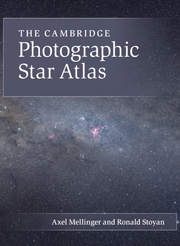Book contents
- Frontmatter
- Preface
- Introduction
- How the panoramic image was made
- Contents
- Atlas charts: Pages 10-23
- Atlas charts: Pages 23-39
- Atlas charts: Pages 40-53
- Atlas charts: Pages 54-69
- Atlas charts: Pages 70-85
- Atlas charts: Pages 86-103
- Atlas charts: Pages 104-119
- Atlas charts: Pages 120-133
- Atlas charts: Pages 134-149
- Atlas charts: Pages 150-161
- Atlas charts: Pages 162-173
- Object index
- References
How the panoramic image was made
Published online by Cambridge University Press: 07 October 2011
- Frontmatter
- Preface
- Introduction
- How the panoramic image was made
- Contents
- Atlas charts: Pages 10-23
- Atlas charts: Pages 23-39
- Atlas charts: Pages 40-53
- Atlas charts: Pages 54-69
- Atlas charts: Pages 70-85
- Atlas charts: Pages 86-103
- Atlas charts: Pages 104-119
- Atlas charts: Pages 120-133
- Atlas charts: Pages 134-149
- Atlas charts: Pages 150-161
- Atlas charts: Pages 162-173
- Object index
- References
Summary
At the heart of this atlas is a huge panoramic image of the night sky. To capture the entire night sky, astrophotographer and physics professor Axel Mellinger traveled to remote, dark sites in South Africa, Texas, and the Huron-Manistee National Forest in Michigan. This is the story of how the panorama was created.
The plan
Taking a photograph of the entire night sky is no easy undertaking, and requires careful planning. The first important choice was for a suitable digital camera. In astrophotography, where long exposure times are required, the sensor chip must be cooled to temperatures of -20°C or less in order to keep the dark current low. After comparing several CCD cameras on the market, the SBIG STL-11000 was selected as the best compromise between sensor size and cost.
Its Kodak KA1-11002 chip has the same size as 35 mm film, i.e. 36 mm × 24 mm. It uses microlenses to enhance its quantum efficiency by directing light to the active pixel areas. The camera was fitted with a Minolta MD 1.4/50 mm lens, originally used on a 35 mm format film-based single-lens reflex camera. To improve the image quality, the lens was stopped down to f/4 for all exposures. The chosen combination of focal length and chip size resulted in a 40° × 27° field of view, i.e. 1080 square degrees. Since the sky has a total area of 41,253 square degrees, a complete all-sky panorama requires at least 38 fields.
- Type
- Chapter
- Information
- The Cambridge Photographic Star Atlas , pp. v - viiiPublisher: Cambridge University PressPrint publication year: 2011



